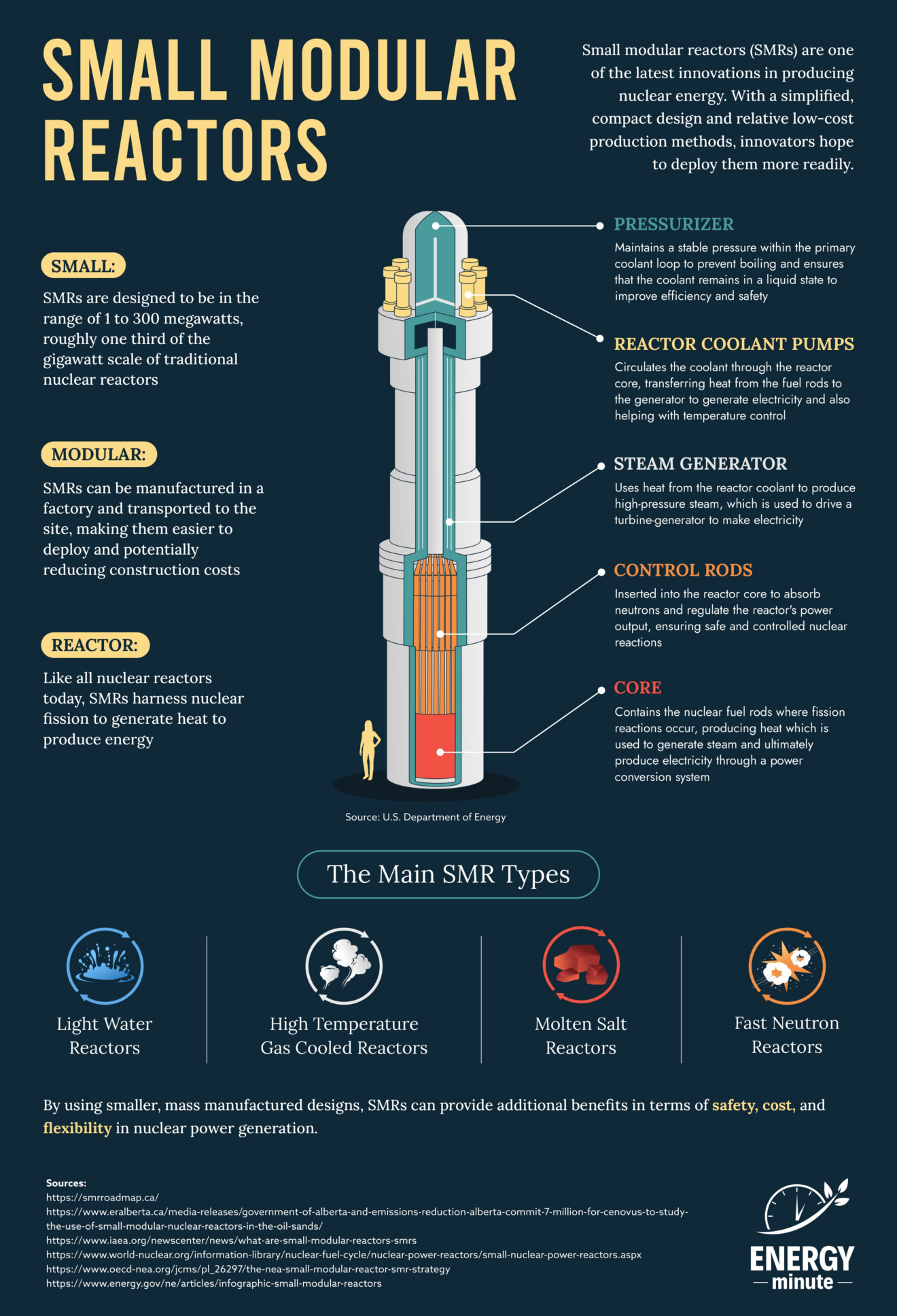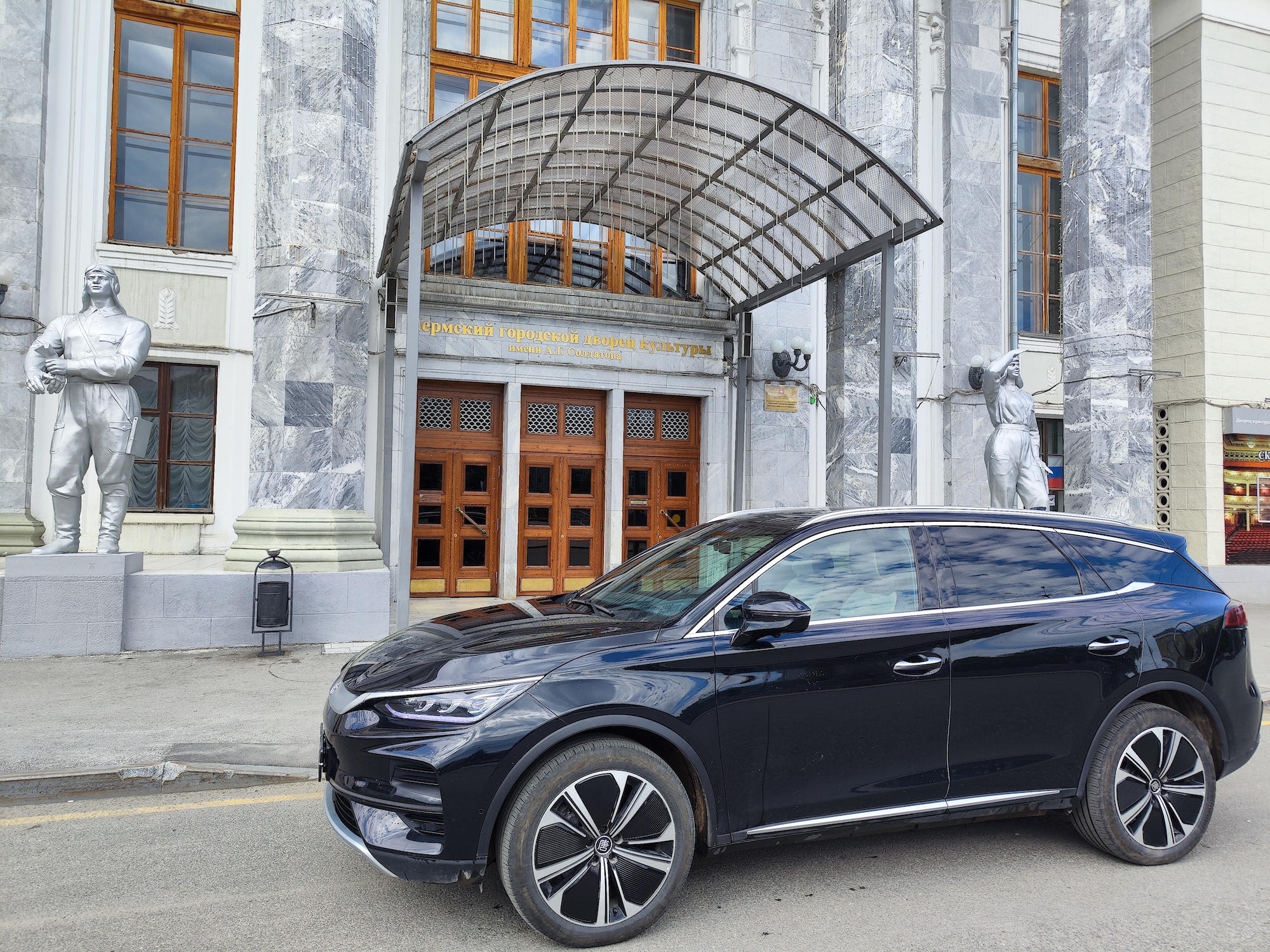By Cody Good

Courtesy of ENERGYminute
See more articles and infographics from ENERGYminute HERE
Small Modular Reactors (SMRs) have a history dating back several decades, and their development has been driven by various factors, including the need for safer and more flexible nuclear energy options. Here’s a brief history of SMRs:
- Early Concepts (1950s-1970s): The concept of smaller nuclear reactors began to emerge in the mid-20th century as researchers and engineers sought to develop nuclear reactors with reduced size, improved safety features, and increased flexibility. Various experimental and prototype reactors were built during this period to explore different designs.
- Experimental Reactors: During the 1960s and 1970s, several experimental SMRs were constructed and tested. These included reactors like the Experimental Boiling Water Reactor (EBWR) and the Small Mobile Molten Salt Reactor (SMMR). These early SMRs helped researchers gain valuable insights into compact reactor designs and their potential advantages.
- Scaling Down: In the 1980s and 1990s, efforts continued to scale down reactor designs. Researchers aimed to develop reactors that could be manufactured in factories and transported to sites, reducing construction time and costs. These designs typically had capacities in the range of 10 to 300 megawatts.
- Interest in Advanced Reactors: In the 21st century, there has been renewed interest in advanced reactor technologies, including SMRs, driven by concerns about climate change, energy security, and the need for low-carbon energy sources. Governments and private companies around the world began investing in SMR research and development.
Breakdown of SMRs:
Small: SMRs are designed to be in the range of 1 to 300 megawatts, compared to the gigawatt scale of traditional nuclear reactors.
Modular: SMRs can be manufactured in a factory and transported to the site, making them easier to deploy and potentially reducing construction costs.
Reactor: Like all nuclear reactors today, SMRs harness nuclear fission to generate heat to produce energy.
Sources:
https://www.iaea.org/newscenter/news/what-are-small-modular-reactors-smrs
https://www.oecd-nea.org/jcms/pl_26297/the-nea-small-modular-reactor-smr-strategy
https://www.energy.gov/ne/articles/infographic-small-modular-reactors
Share This:




